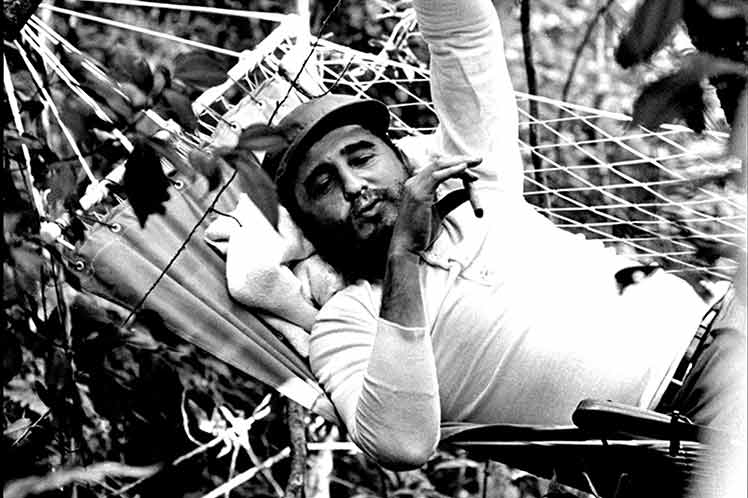Fidel Castro was a man of the XXII or XXIII century, I think he asked humanity much more than it would give him, the renowned American photographer Roberto Salas recalls.
Speaking to Prensa Latina, Salas recalled his permanence with the historical leader of the Cuban Revolution after the 1959 triumph, a stage that would mark his work for the next few years within the so-called epic photography.
“I met him when I was 14 years old in New York in 1955 because the journalist Vicente Cubillas interviewed him for Bohemia magazine and my father (Osvaldo Salas, renowned Cuban photographer) took his photos,” he commented.
According to historical investigations, Fidel Castro and other members of the July 26 Movement were in the United States to tour several cities and meet with Cubans in emigration.
“When he leaves New York, I keep in touch with the people who organize activities against the Cuban dictatorship and I start helping my old man to take photos, carry suitcases, whatever is necessary,” he recalls.
According to Salas, this link grows stronger over the years and in 1957 he took a photo that is currently considered the most important image of the Movement outside the island.
The young American of Cuban parents was surprised by the revolutionary triumph of 1959 and enrolled on his first trip to the island on January 2 of that same year.
“I went to the Presidential Palace, I was walking with Manuel Urrutia who was appointed provisional president and amidst the joy, the confusion, the enthusiasm I tried to take some snapshots.”
He was reunited with Fidel Castro and became one of the photographers who accompanied the leader on his visits to Venezuela, the United States and Latin American countries during that first year.
“I worked for the newspaper Revolución mainly, in 1960 I opened the Prensa Latina correspondent in the United States with Francisco Portela and accompanied Fidel while he was in the United Nations General Assembly that year,” he said.
His photographs for the Caribbean press got her into trouble with the Federal Bureau of Investigation (FBI) because, in theory, he was an American employed by the Cuban government.
“There was a lot of pressure and tension on me, so I decided to go to Miami and there they put me on a Cubana de Aviación flight hiding in the bathroom.”
Salas could not return to his native country until 1994 when he prescribed the crime for which they wanted to prosecute him.
As a photographer for the main national press media of the time, he especially remembers the images he made of Fidel Castro in the Gran Piedra, Santiago de Cuba, in 1963.
“In addition, I took some personal photos of him when I went with him in 1965 to Pico Turquino (east) as part of a graduation from a medical contingent.”
In 1967 Salas traveled to Vietnam for the first time as a war correspondent. When he finished his work in the Asian country, he returned to Cuba and met the historical leader on several occasions.
?Fidel had a lot of respect for my father and he put it that way. Imagine! My father took photos of him when no one knew him in the 1950s?, he added.
The photographer remembers him as a man concerned about others with a great ability to retain small details.
Cuban intellectual Rafael Acosta wrote in Roberto Salas’s latest book that his images of Fidel Castro also reflect how lonely he could be.
?As I felt relaxed next to him, I tried to capture the essence of his personality. My opinion about Fidel Castro is the same as when I met him: he was a man of the future with incredible sensitivity and memory?, he emphasized.

